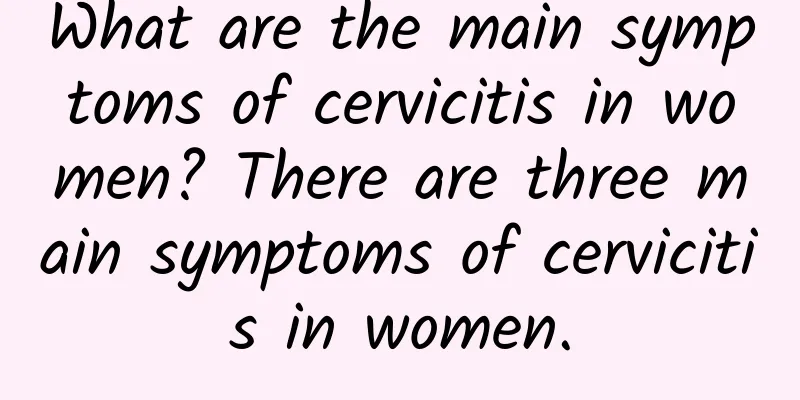Can hyperprolactinemia be cured by Western medicine?

|
Hyperprolactinemia has a great impact on women's future menstruation and pregnancy, but it does not mean that it cannot be cured. Generally, before treatment, a good analysis of the condition should be done and then treatment should be carried out according to different causes. If it is caused by medication, stop taking the medication. If it is caused by hypothyroidism, take thyroxine tablets for replacement therapy. If it is caused by pituitary tumors, drugs and surgery should be used to treat the tumor. 1. Treatment of the cause and primary disease For example, eliminate adverse mental stimulation, stop taking HPRL-inducing drugs, and actively treat primary diseases such as pituitary tumors, hypothyroidism, Cushing's disease, etc. 2. Anti-prolactin-bromocriptine therapy Bromocriptine is a semi-synthetic ergot alkaloid derivative and a dopamine receptor agonist. It can promote the synthesis and secretion of PRL-IH and inhibit the synthesis and release of PRL through the receptor mechanism. It also directly acts on pituitary tumors and PRL cells to curb tumor growth and inhibit the secretion of PRL, GH, TSH and ACTH. Bromocriptine therapy is suitable for all types of HPRL and is also the first choice for pituitary adenomas (micro/macroadenomas), especially for young infertile women who are looking forward to having children. The dose is 2.5-7.5 mg/d, taken orally. Other anti-prolactin drugs include: levodopa, octahydrobenzoquinoline (cv205-502), vitamin b6, etc. For details, please refer to the anti-prolactin section of the endocrine therapy chapter. 3. Ovulation induction treatment It is suitable for patients with HPRL, anovulatory infertility, and those who cannot successfully ovulate and become pregnant after simple bromocriptine treatment. That is, a comprehensive therapy with bromocriptine as the main drug and other ovulation-promoting drugs: ① bromocriptine-cc-hcg; ② bromocriptine-hmg-hcg; ③ gNRH. Pulse therapy-bromocriptine, etc. Comprehensive therapy can save anti-prolactin, shorten the treatment cycle and increase the ovulation rate and pregnancy rate. 4. Surgical treatment It is suitable for patients with giant adenomas that present compression symptoms, as well as patients with drug-resistant tumors, patients who are ineffective in bromocriptine treatment, and patients with multiple pituitary hormone secretion in sphenoid cell tumors. The current transsphenoidal microsurgery is safe, convenient, and easy to perform, and its efficacy is similar to that of bromocriptine therapy. The combination of bromocriptine before and after surgery can improve the efficacy. The disadvantages of the surgery are: for patients with pituitary tumors without obvious capsules and unclear boundaries, the surgery is not easy to be thorough or may cause damage, resulting in cerebrospinal fluid nasal fistula and secondary hypopituitarism. 5. Radiation therapy It is suitable for non-functional tumors of the HP system and those who have not responded to drug and surgical treatment. Irradiation methods include: deep X-ray, 60Co, α particles and proton rays. Isotope 90yttrium, 198gold pituitary implantation, etc. |
<<: How to improve the cure rate of hyperprolactinemia
>>: What foods are best for hyperprolactinemia?
Recommend
Psychological stress is also one of the causes of vaginitis
It is generally believed that the cause of vagini...
What are the complications of menopausal syndrome?
Once a woman reaches the age of 40, she will expe...
What are the dangers of menopause?
Menstruation is an important companion for female...
What medicine can cure endometritis and pelvic inflammatory disease faster?
Endometritis and pelvic inflammatory disease can ...
Winter melon lotus leaf tea for weight loss, refreshing and cooling
[Key Points]: Can winter melon and lotus leaf tea...
Gynecological Hospital talks about the hazards of endometrial tuberculosis
Endometrial tuberculosis is a common gynecologica...
Reasons for the high incidence of endometrial tuberculosis
Endometrial tuberculosis is a gynecological disea...
Does ovulation bleeding mean cervical cancer?
Ovulation bleeding is not cervical cancer, but a ...
How much does a painless abortion cost in Chengdu?
In modern times, couples often do not want childr...
Can pressing the right acupoints help you lose weight? 5 acupressure massages to promote metabolism, improve brain circulation, and adjust the autonomic nervous system
DIY to quickly reduce brain fatigue Massage not o...
What are the reasons for a small amount of bleeding during non-menstrual period?
As the saying goes, a healthy beggar is happier t...
Can obesity cause menstrual irregularities?
Menstrual irregularities caused by obesity may be...
Dietary therapy for auxiliary treatment of cervical erosion
If cervical erosion is not treated in time or is ...
What are the early symptoms of uterine fibroids? What are the symptoms of uterine fibroids?
Uterine fibroids are a common benign tumor in the...
Do you want to know why adnexitis harms you?
In this hot summer, it is the season when disease...









